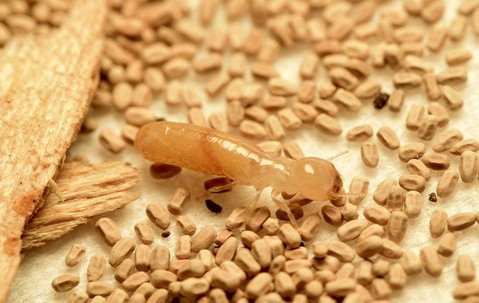If you live in the Quad Cities, you probably don't think much about Drywood termites. You may not even know what a Drywood termite is. It wouldn't surprise us. Drywood termites don't live in Illinois unless they're indoor pests. Today, we're going to discuss how you might get a drywood termite infestation, how to detect an infestation, and what it could mean for your finances if these termites get into your Quad Cities home. Have a read.
What You Need To Know About Drywood Termites
Let's cover a few important facts to help you understand this pest control problem better.
These termites do not need contact with the ground, like subterranean termites in the Quad Cities do. If you have invested in termite control for your property, it won't cover drywood termites.
These termites live in hardwood. They can get into the building materials of a home, or they can get into hardwood furniture.
It is difficult to detect drywood termites because they hide from the light. You can have a large infestation and not know it.
How A Drywood Termite Infestation May Begin
There are many ways you can get drywood termites. These are just a few examples to help you keep an eye out for this pest threat.
If you purchase hardwood furniture from a home where there is a drywood termite infestation, the furniture could have termites.
If you have a college-age child who comes home from school, drywood termites could come home with them in their furniture.
If someone moves into a spare room or you rent out a mother-in-law apartment of your home, drywood termites could be brought in with furniture.
If you buy hardwood from out of state, there is a possibility that the wood can have drywood termites in it. Fortunately, this is rare.
How To Detect Termites
Drywood termites are very secretive, but there are ways you may detect their presence in your home.
Drywood termite pellets: This material, also called frass, can be found on window sills, door frames, and baseboards. This fecal matter is hard, and the same color as the wood that was consumed. For this reason, it is sometimes mistaken for sawdust. Keep in mind that Drywood termite pellets can be pushed out into wall, ceiling, and floor voids where they can't be easily seen.
Termite swarmers: These are winged termites that develop for the purposes of mating and establishing new colonies. If you see Termite swarmers in your home, you might mistake them for some other flying insects and just suck them up with your vacuum. We hope you don't. Look for the identifying feature of long white wings that are rounded at the tips.
Drywood termite damage: Most of the damage drywood termites do is on the inside of wood, but there is a chance you may see signs that damage is occurring, such as honeycomb indents in baseboards or in the frames around windows and doors. You might also see wood deterioration if an infestation gets large enough.
What Drywood Termites Can Do To Your Finances
These insects cost U.S. property owners hundreds of millions annually. If they elude your detection, or you ignore the warning signs, these insects can create damage that is very difficult to repair. Learning how to detect termites is only the first step. Once you find them, you need to contact a licensed professional to address the infestation in your home. We don't recommend treating termites yourself because it is very difficult, and it can leave you exposed to the financial implications of having these destructive termites in your home.
Termite Pest Control
If you live in the Quad Cities, reach out to Quik-Kill Pest Eliminators for our effective termite control service. We use the most trusted products, and our technicians are trained to evaluate the success of product applications. We'll make sure no drywood termites remain in your Quad Cities property.

